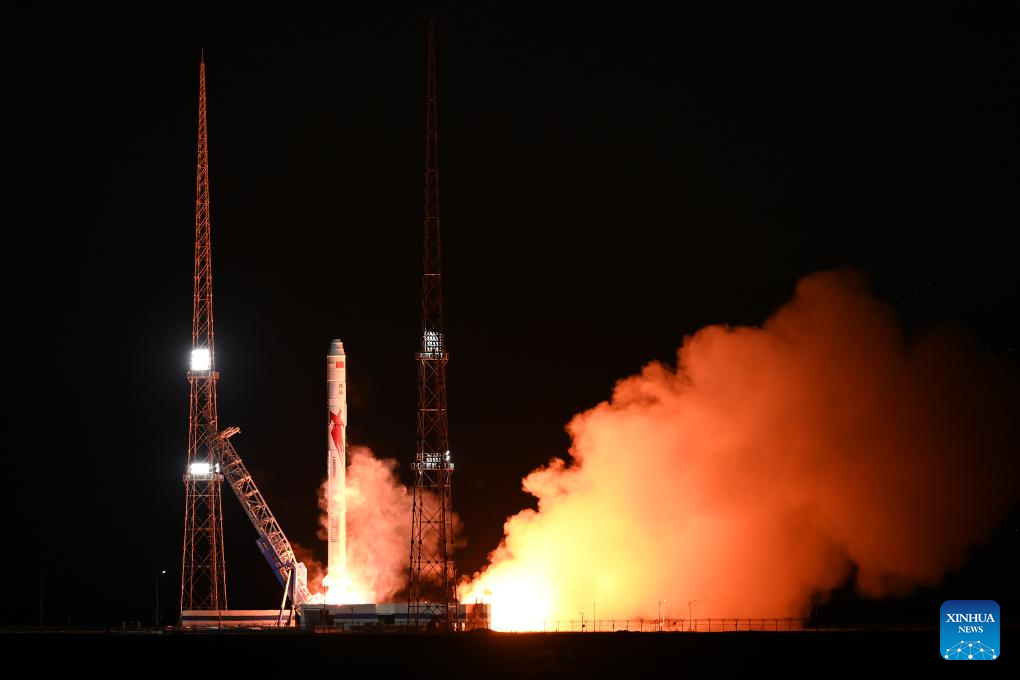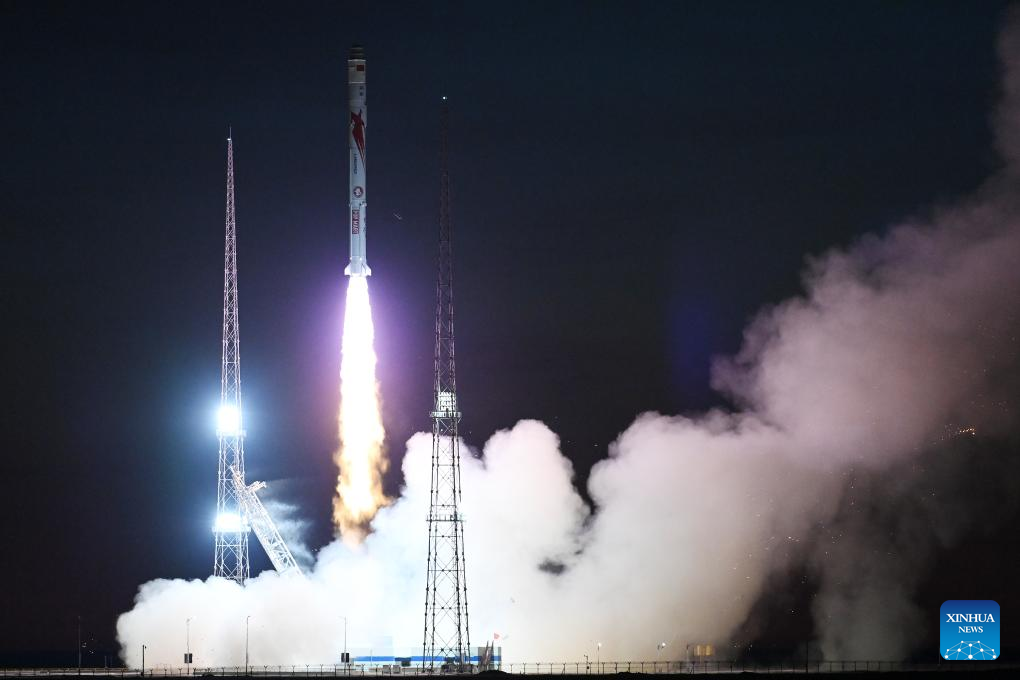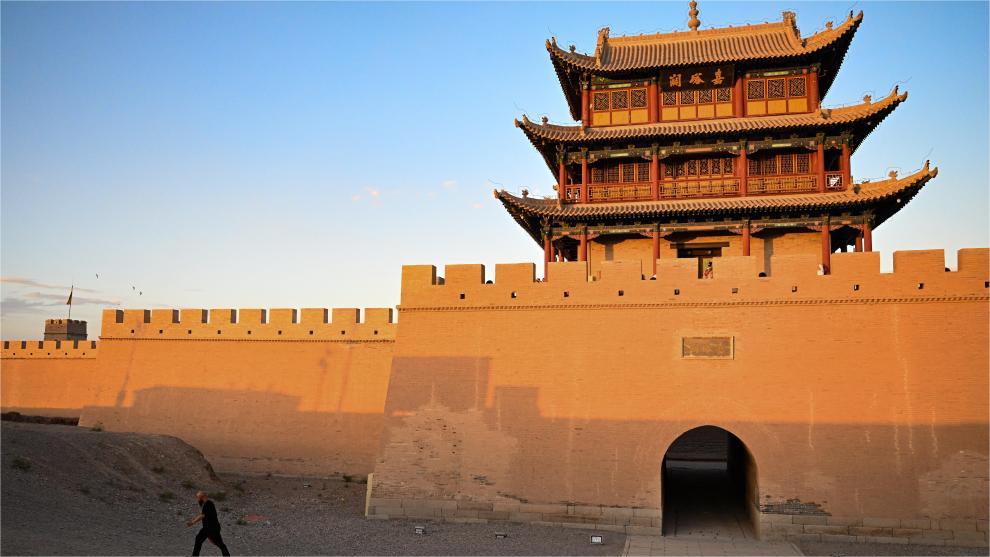China launches liquid oxygen-methane Zhuque-2 carrier rocket for three satellites

The Zhuque-2 Y-3 carrier rocket blasts off from the Jiuquan Satellite Launch Center in northwest China on Dec. 9, 2023. The carrier rocket blasted off at 7:39 a.m. (Beijing Time) and sent three satellites -- Honghu, Honghu-2 and TY-33 -- into planned orbit. (Photo by Wang Jiangbo/Xinhua)
JIUQUAN, Dec. 9 (Xinhua) -- China on Saturday successfully launched the Zhuque-2 Y-3 carrier rocket into space from the Jiuquan Satellite Launch Center in northwest China.
The carrier rocket blasted off at 7:39 a.m. (Beijing Time) and sent three satellites -- Honghu, Honghu-2 and TY-33 -- into planned orbit.
It was the third flight mission of the Zhuque-2 carrier rocket.
The success of this launch mission has made Zhuque-2 China's first commercial liquid carrier rocket to be successfully launched in a row. In this mission, its technical maturity and stability were further verified, its reliability met the requirements of commercial launch delivery, and the rocket is closer to the phase of mass production and delivery.
The Zhuque-2 is China's first medium and large-size liquid rocket with liquid oxygen and methane as propellant. It is independently developed by LandSpace, and provides low-cost and highly reliable launch services to meet the commercial launch requirements in multiple scenarios.
Liquid oxygen-methane fuel is a type of rocket propellant formed by liquid oxygen and methane, the latter of which is the main component of natural gas.
The rocket has a height of 49.5 meters and a body diameter of 3.35 meters. Its takeoff weight is about 220 tonnes, and its takeoff thrust is about 268 tonnes.
Its carrying capacity is 1.5 tonnes for a 500-km sun synchronous orbit, and the following improved version can reach a carrying capacity of 4 tonnes for the same orbit, which can meet the needs of low-Earth orbit satellite deployment and the launch of transport spacecraft.
In Saturday's mission, the Zhuque-2 Y-3 rocket successfully sent three satellites into the sun-synchronous orbit at an altitude of 460 km.
The mission signifies that the rocket has carried out a commercial multi-satellite launch mission, and the developer of the rocket has made steady progress in its commercial operation of rockets. It also accumulated data and flight experience for the satellite's improvement and follow-up progress.
"Rockets are in the trend of large carrying capacity and low cost in the commercial space era. The key to the industrialization and commercialization of liquid rockets is to achieve low-cost, large-scale manufacturing and delivery, and continuous and stable launch," said Dai Zheng, deputy chief engineer and deputy chief commander of Zhuque-2.
LandSpace has cultivated a large-scale delivery capacity of rockets for commercial launch missions. It will continue to build commercial launch vehicles featuring high reliability, low cost and large capacity to sustain China's construction of a low-orbit satellite network, and support the development of low-cost cargo transport for the space station, according to Dai.

The Zhuque-2 Y-3 carrier rocket blasts off from the Jiuquan Satellite Launch Center in northwest China on Dec. 9, 2023. The carrier rocket blasted off at 7:39 a.m. (Beijing Time) and sent three satellites -- Honghu, Honghu-2 and TY-33 -- into planned orbit. (Photo by Wang Jiangbo/Xinhua)

The Zhuque-2 Y-3 carrier rocket blasts off from the Jiuquan Satellite Launch Center in northwest China on Dec. 9, 2023. The carrier rocket blasted off at 7:39 a.m. (Beijing Time) and sent three satellites -- Honghu, Honghu-2 and TY-33 -- into planned orbit. (Photo by Wang Jiangbo/Xinhua)

The Zhuque-2 Y-3 carrier rocket blasts off from the Jiuquan Satellite Launch Center in northwest China on Dec. 9, 2023. The carrier rocket blasted off at 7:39 a.m. (Beijing Time) and sent three satellites -- Honghu, Honghu-2 and TY-33 -- into planned orbit. (Photo by Wang Jiangbo/Xinhua)

The Zhuque-2 Y-3 carrier rocket blasts off from the Jiuquan Satellite Launch Center in northwest China on Dec. 9, 2023. The carrier rocket blasted off at 7:39 a.m. (Beijing Time) and sent three satellites -- Honghu, Honghu-2 and TY-33 -- into planned orbit. (Photo by Wang Jiangbo/Xinhua)
Photos
Related Stories
Copyright © 2023 People's Daily Online. All Rights Reserved.









